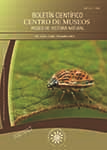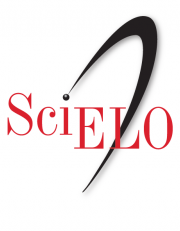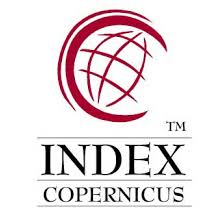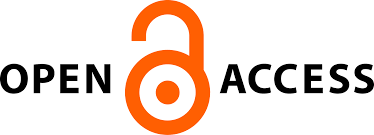Authors
Abstract
The objective of this investigation was to evaluate the diversity, abundance, and biomass of soil macrofauna in four soil uses: potato crops with minimum tillage, potato crops with traditional tillage, bare soil, and a kikuyu turfgrass. The methodology from the Tropical Soil Biology and Fertility (TSBF) program was used to evaluate the fauna. Soil macrofauna was identified to order and family level. The greatest abundance and diversity of macroinvertebrates was found with bare soil and turfgrass, compared with the other treatments. There was a noteworthy presence of scarab grubs (Scarabeidae) and mites (Oribatida) in tillage soils, which are characteristic organisms of these systems. Earthworms (Haplotaxida) represented the highest biomass and abundance in less intervened soils, reaffirming the potential of these organisms as soil quality bioindicators of the studied agro ecosystems. Tillage type and use are determining factors in macrofauna biodiversity in soil, because it can benefit or affect their establishment and development.
References
ARROYO, J. & ITURRONDOBEITIA, J., 2006. Differences in the diversity of oribatid mite communities in forests and agrosystems lands, Eur. J. Soil. Biol., 42: 259–269,
ASSAD, M.L., 1997. Fauna do solo: 363 – 443. (en) Vargas M A & Hungia, T, (eds) Biología dos solos dos cerrados. EMBRAPA-CPAC, Planaltina, Brasil.
BALORIANI, G. & SARANDON, S., 2009. Abundancia y riqueza de la macrofauna edáfica (Coleoptera y Araneae) en invernáculos convencionales y en transición agroecológica. Rev. Bras. Agroecología. 4 (2): 1733-1737.
BRÉVAULT, T.; BIKAY, S.; MALDES, J & NAUDIN, K., 2007. Impact of a no-till with mulch soil management strategy on soil macrofauna communities in a cotton cropping system. Soil. Til. Res., 97: 140-149.
CASTIGLIONI, E., 1997. Manejo de la fauna del suelo e insectos plaga, [On line[. Obtenido en Septiembre 15 de 2009, Desde: http://www.sofoval.com/.
CASTRO, J.; BURBANO, H. & BONILLA, C., 2007. Abundancia y biomasa de organismos edáficos en tres usos del terreno en el altiplano de Pasto, Colombia: Tesis, Universidad de NariÑo, Facultad de Ciencias Agrícolas, Pasto.
CHAMORRO, C., 2001. El suelo: maravilloso teatro de la vida. Rev. Acad. Colomb. Cienc., 25 (97): 483-494.
COLEMAN, D.; CROSSLEY, D. & HENDRIX, P., 2004. Fundamentals of soil ecology, Burlington MA Elsevier Academic Press.
CORAL, D.M., BONILLA, C.R., 1998. Impacto de las prácticas agrícolas sobre la macrofauna del suelo en la cuenca alta del lago Guamués, Pasto, Colombia. Acta Agron., 32: 157-160.
DORESTE, E., 1984. Acarología. Instituto Interamericano de Cooperación para la Agricultura. San José, Costa Rica.
FAUCHALD, K., 1977. The polychaete worms. Definitions and keys to the orders, families and genera. Natural History Museum of Los Angeles County, Science Series, 28: 1-188.
FILSER , J.; FROMM , H.; NAGEL , R, & WINTER , K., 1995. Effects of previous intensive agriculture management of microorganism and the biodiversity of soil fauna. Plant Soil, 170: 123-129.
HENDRIX, P.; MUELLER , B.; BRUCE, R.; LANGDALE, G. & PARMELEE, R., 1992. Abundance and distribution of earthworms in relation to landscape factors on the Georgia piedmont, USA. Soil Bio. Biochem., 24 (12): 1357–1361.
HOUSE, G.J, & STINNER, B.R., 1983. Arthropods in no-tillage soybean agroecosystems: Community composition and ecosystem interactions. Environ. Manage., 7(1):23-28.
IRAOLA, V., 1998. Introducción a los ácaros (I): Descripción general y principales grupos. Bol. S.E.A., 23: 13-19.
LAL, R., 1998. Effects of macrofauna on soil properties in tropical ecosystems. Agric. Ecosystem. Environment., 24: 101-106.
LAVELLE, P.; BIGNELL, D.; LEPAGE, M.; WOLTERS, V; ROBER, P.; INCSON, P.; HEAL, O.W. & DhilLion, S., 1997. Soil function in a changing world: the role of invertebrate ecosystem engineers. Eu. J. Soil. Biol., 33: 159–193.
LAVELLE, P. & KOHLMAN, B., 1984. Etude quantitative de la macrofaune do sol dans une forest tropicale. Pedobiologia, 24: 834 – 845.
LIETTI M.; GAMUNDI, J.; MONTERO, G.; MOLINARI, A. & BULACIO, V., 2008. Efecto de dos sistemas de labranza sobre la abundancia de artrópodos que habitan en el suelo. Ecol. Austral, 18: 71-87.
LINDEN, D.R.; HENDRIX, P.F.; COLEMAN, D.C. &VAN VLIET, P.C.J., 1994. Faunal indicators of soil quality: 91-106. (en) Soil Science Society of America (ed.) Defining soil quality for a sustainable environment, Special Publication Number 35, Madison, Wisconsin.
MAGURRAN, A., 1988. Ecological diversity and it's measurement. New Jersey Princeton University Press.
MARÍN, E. & FEIJOO, A., 2005. Efecto de la labranza sobre macroinvertebrados del suelo en vertisoles de un área de Colombia. Terra Latinoamericana, 25 (3): 297-310.
NAVARRETE, J. & NEWTON, A., 1996. Biodiversidad, taxonomía y biogeografía de artrópodos de México: hacia una síntesis de su conocimiento, México DF UNAM.
PEÑA, L.A.; BOLAÑOS, M.A.; LUCERO, A.M. & VALLEJO, H., 2003. Investigación para el manejo integrado de chisas en fincas de minifundio en los municipios de Yacuanquer y Ospina del departamento de NariÑo. Boletín Técnico No 3, Corpoica Pasto.
REMY, E. & DAINAR, T.B., 1982. Effects of tillage methods on earthworm population in monoculture corns. Can. J. Soil Sci., 62: 699-703.
SPAD, 1997. Logiciel diffusé par CISIA, Version 3,21. Saint-Mandé, France CISIA.
TRIPLEHORN, C.A. & JOHNSON, N.F., 2004. Borror and DeLongs Introduction to the Study of Insects. Belmont USA Thomson Brooks/Cole.
VIKRAM, M.; KIRAN, V.P.; RAVINDER, V. & BALASHOURI, P., 1994. Earthworms biomass response to soil management in semi-arid tropical alfisol agroecosystems. Biol. Fert. Soils, 19: 317-321.
WARDLE, D., 1995. Impacts of disturbance on detritus food webs in agroecosystems of contrasting tillage and weed management practices. Adv. Ecol. Res. 26: 105-159.

 PDF (Español)
PDF (Español)
 FLIP
FLIP


















